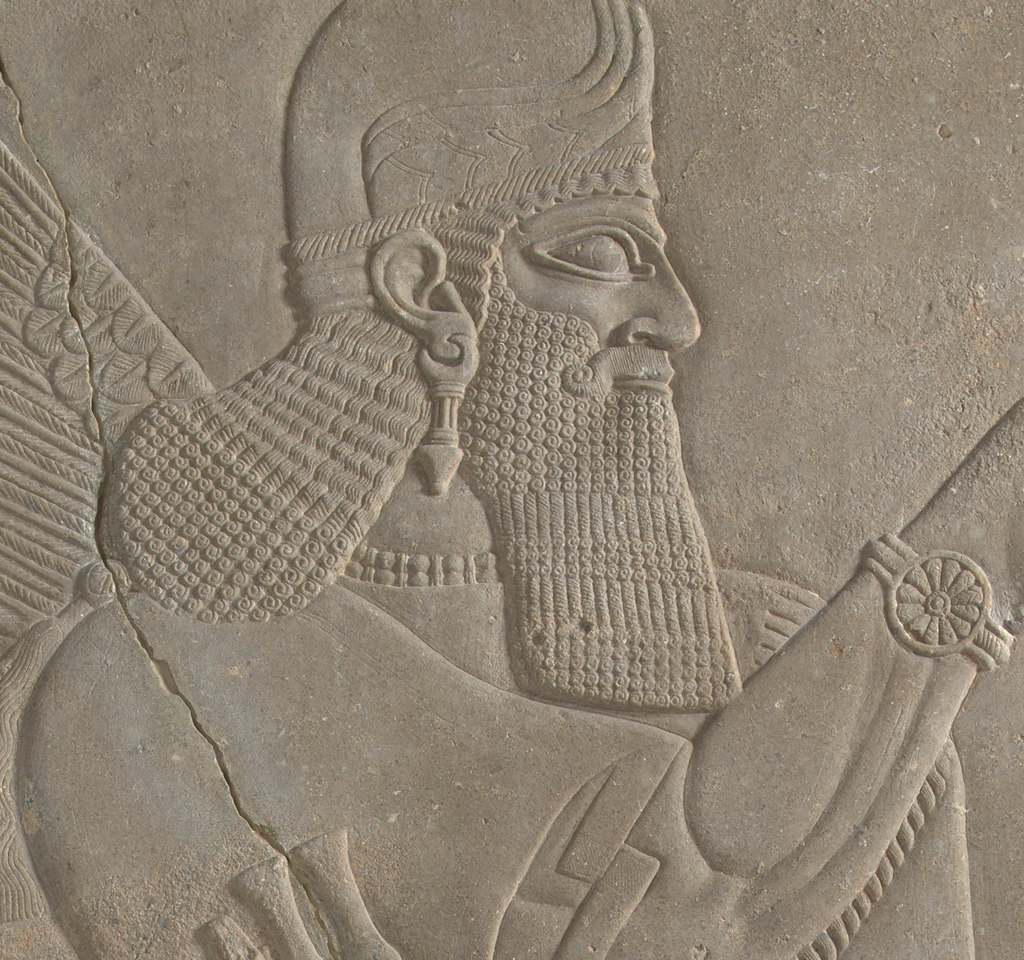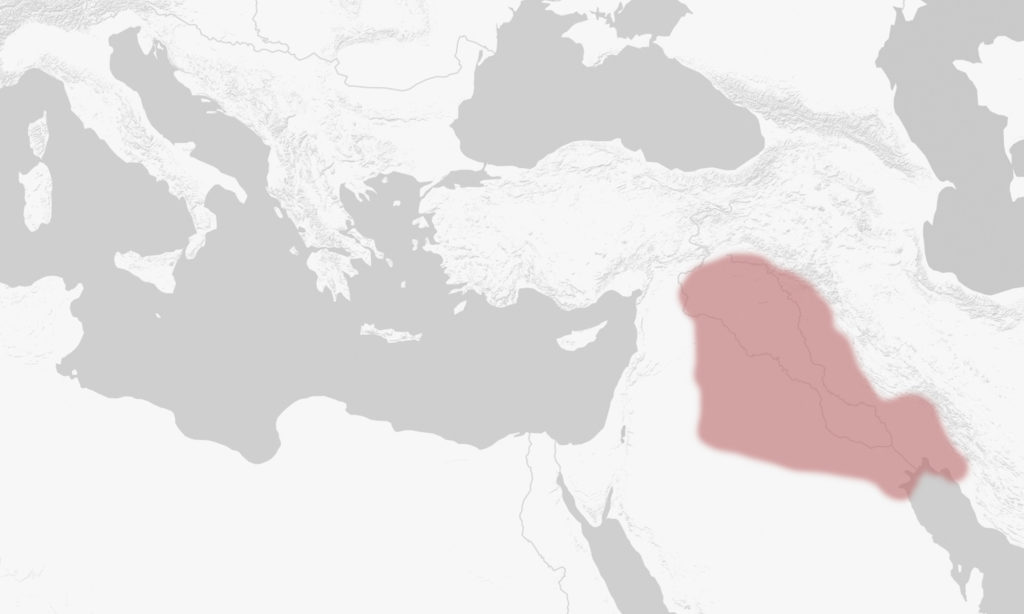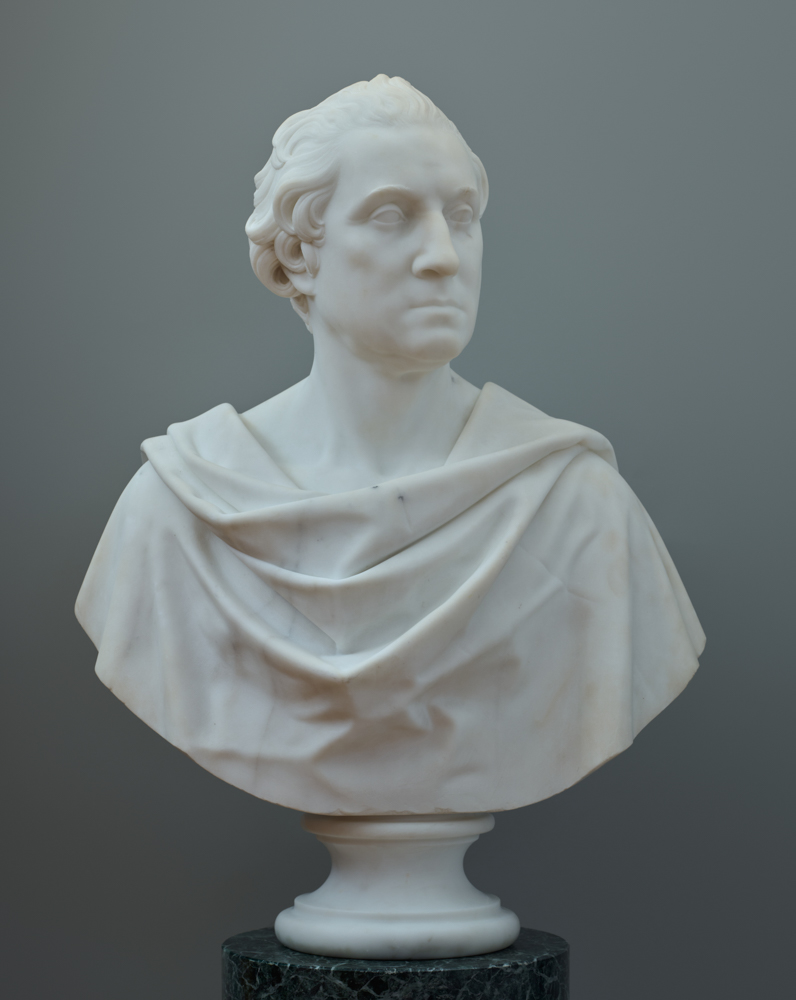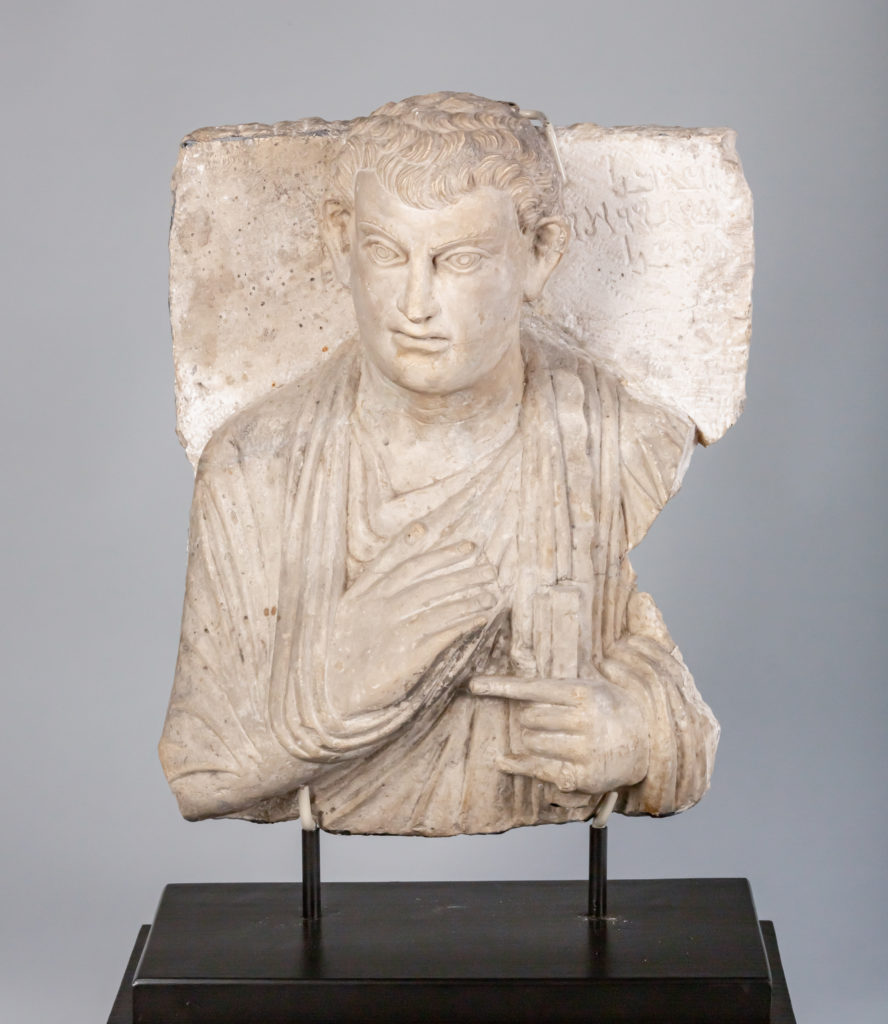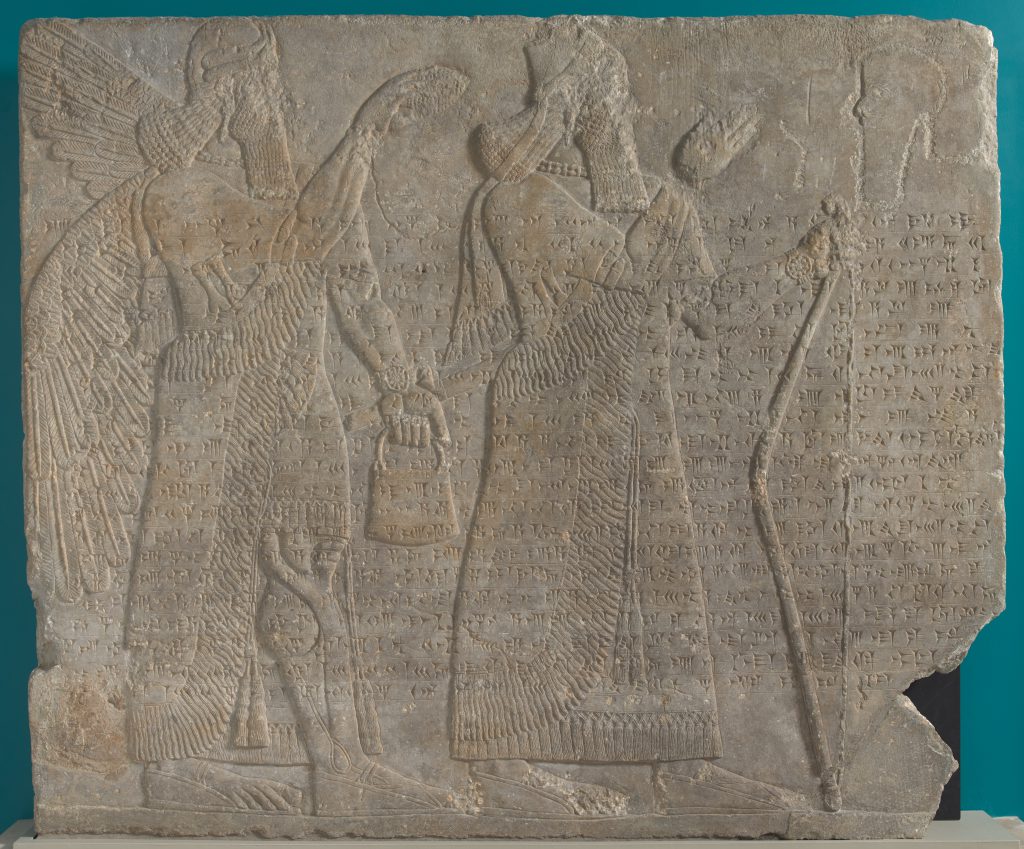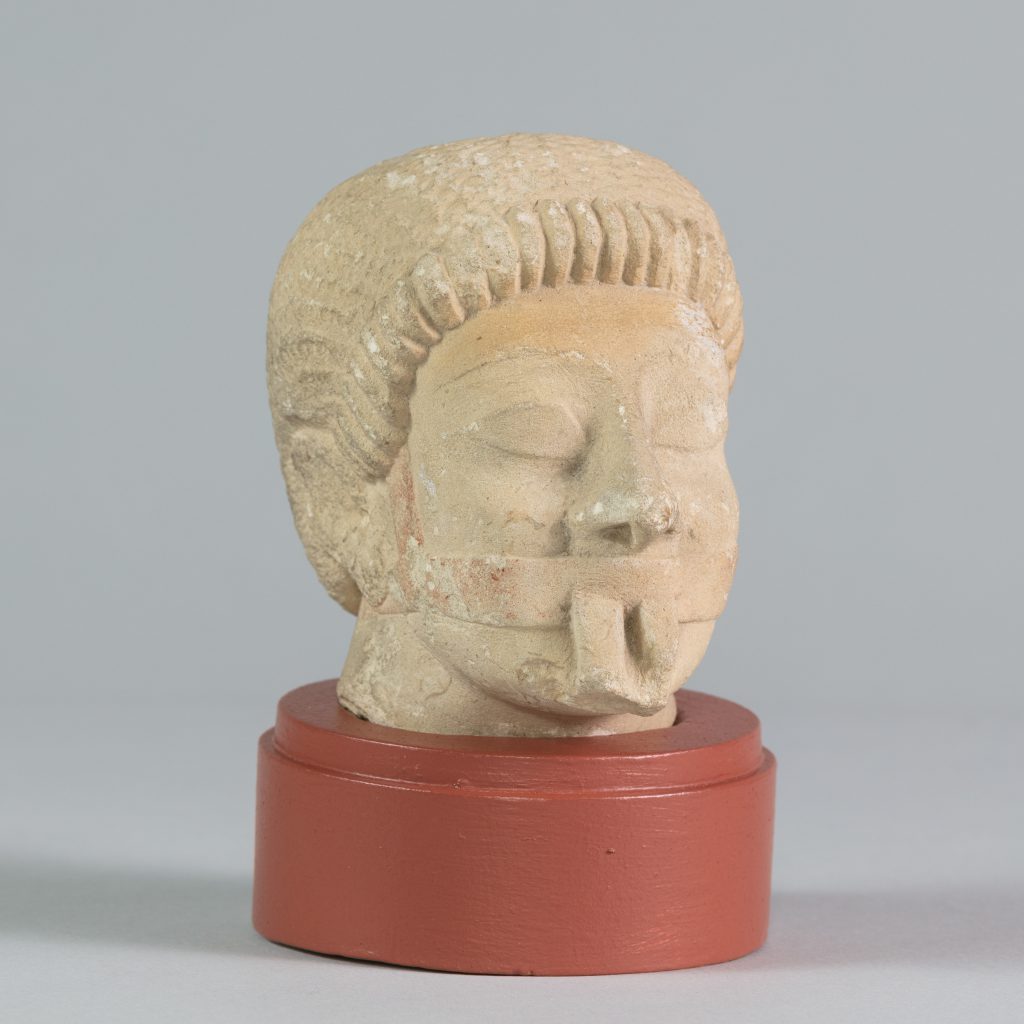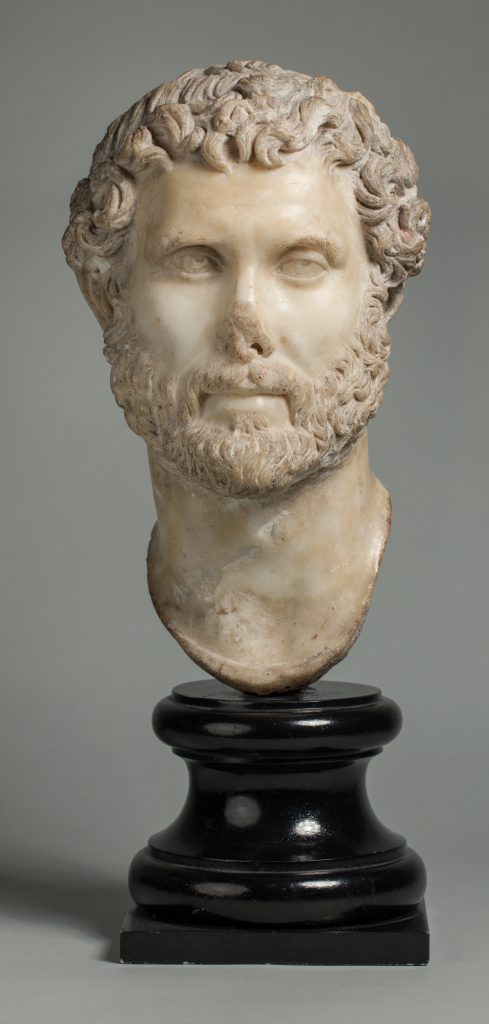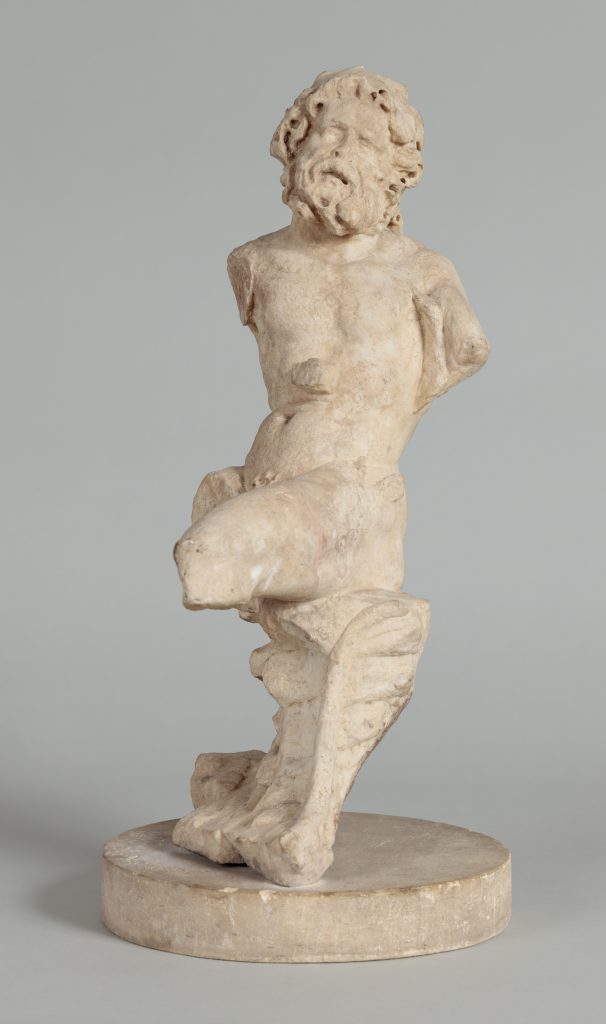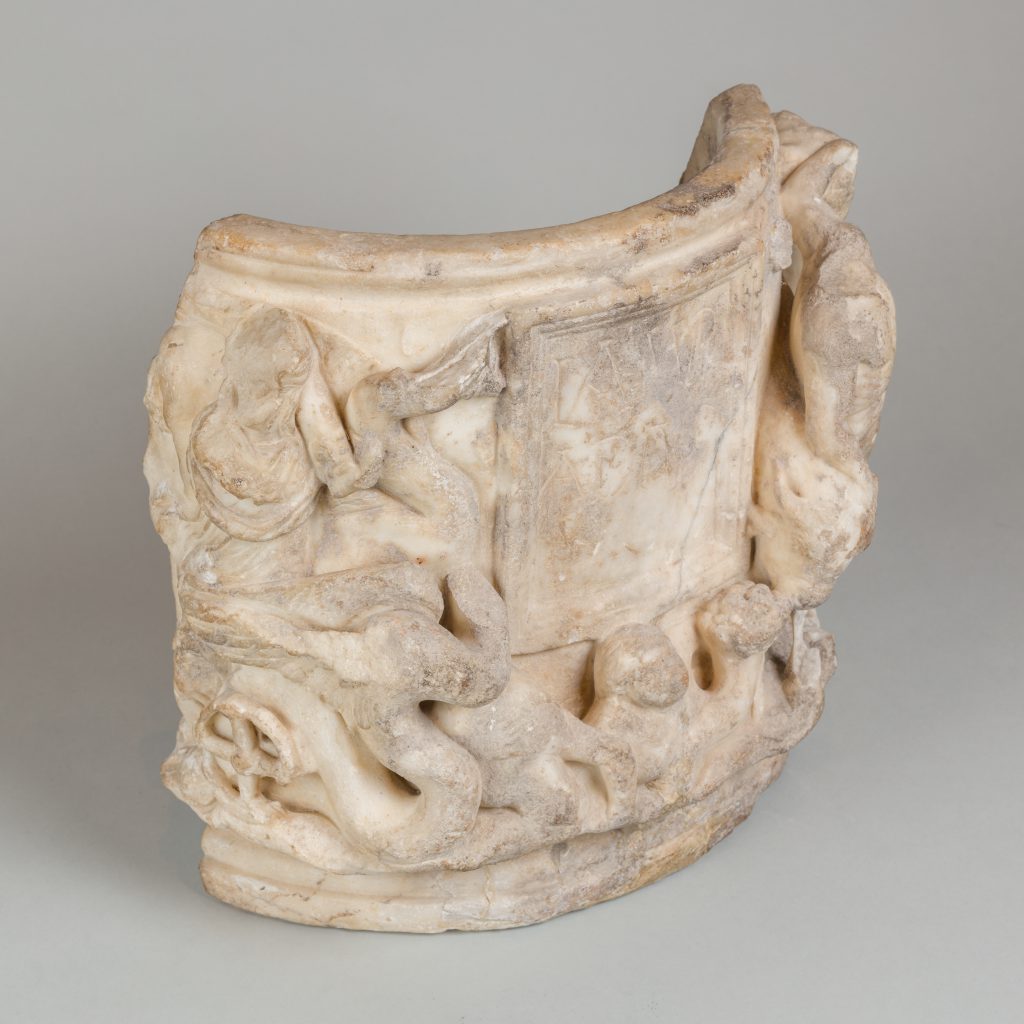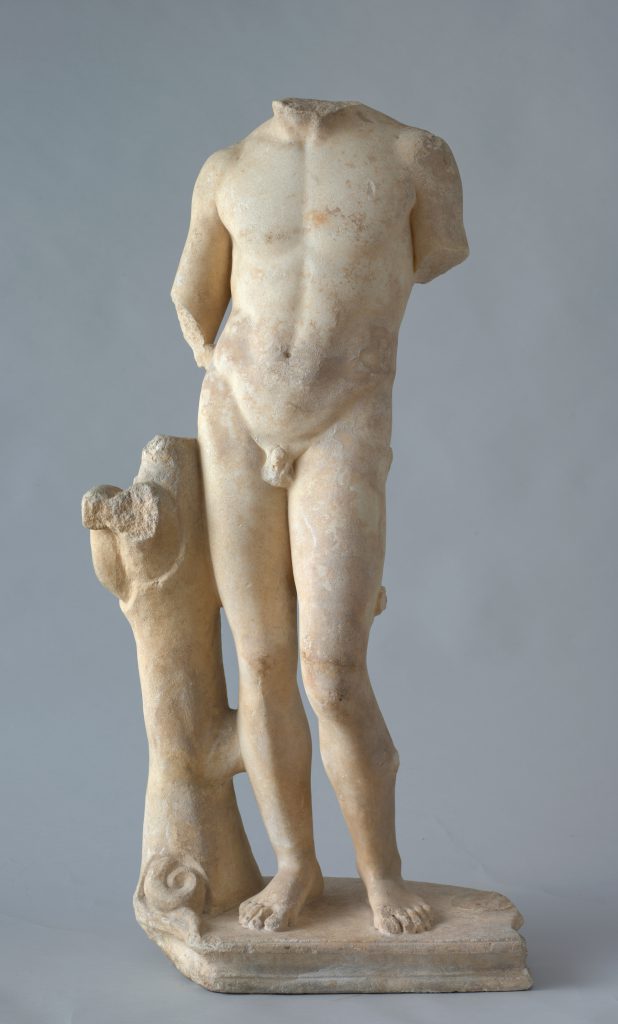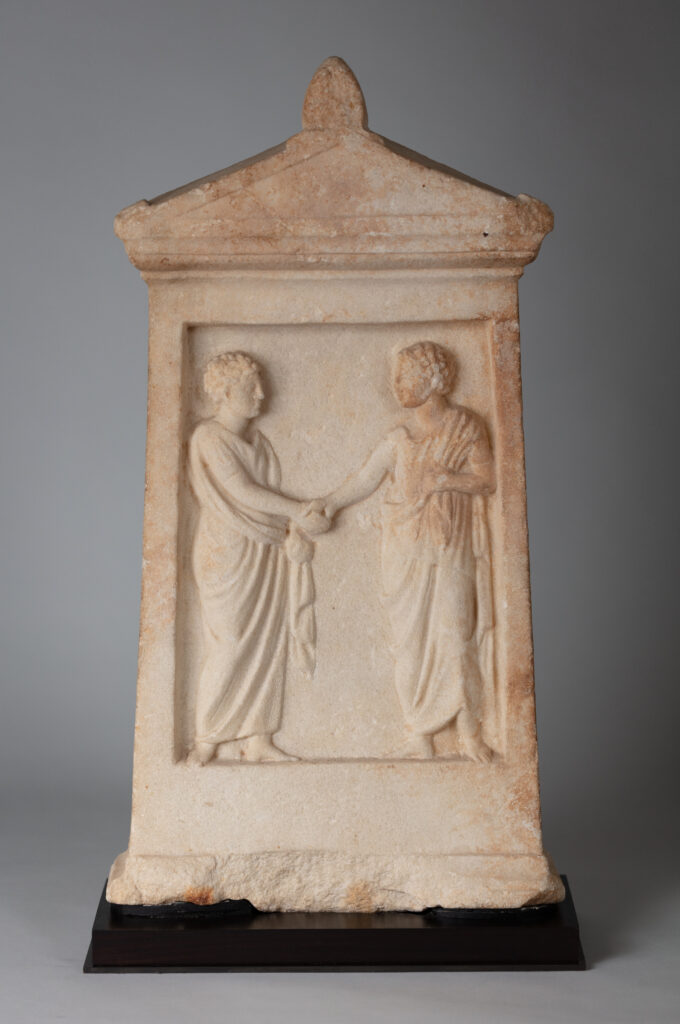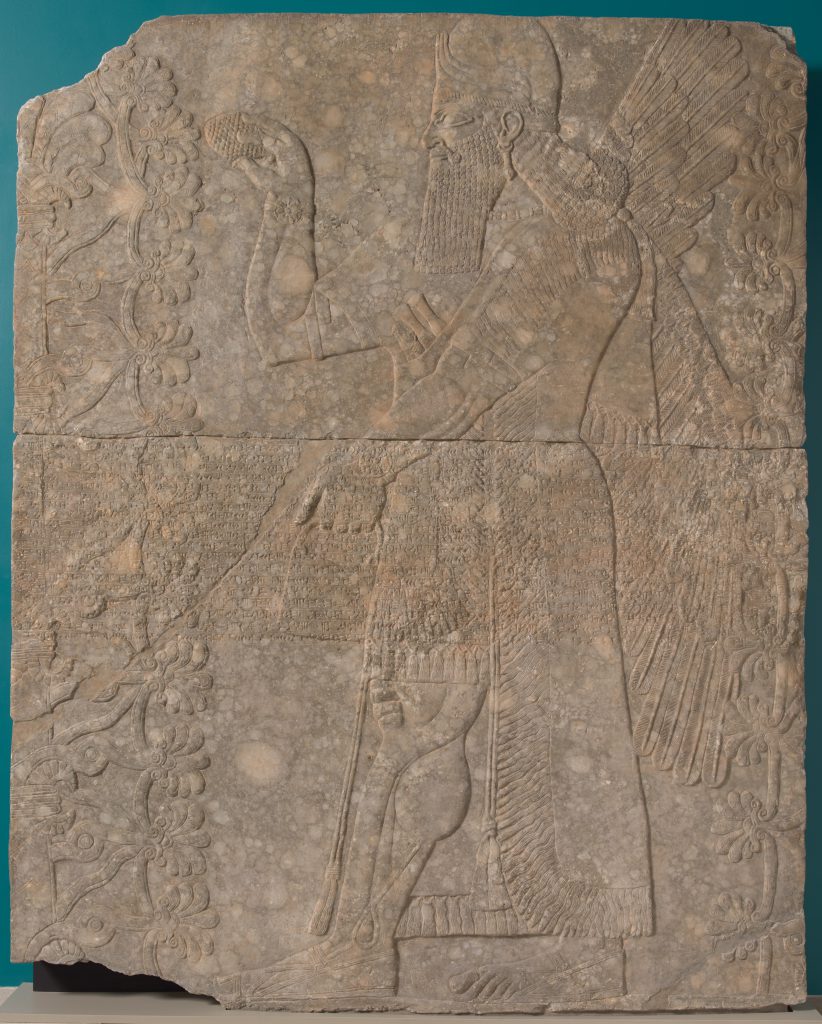
Gift of Dr. Henri Byron Haskell, Medical School Class of 1855
1860.4The winged figure, apkallu, is often mentioned in Assyrian texts. With magical and protective powers, he serves to guard the king and his realm. The horned crown announces his divinity, though his portrait here bears an uncanny resemblance to King Ashurnasirpal II (883–859 BCE) himself. He holds a bucket in his left hand, while in his right, he sprinkles a sacred tree using a “purifier,” resembling the spathes, or flower sheaths, from the date palm.
The spirit wears a tasseled kilt and richly embroidered robe and projects a powerful pose. Tucked into the folds of his robe are two daggers and a whetstone for sharpening the blades. Armlets and rosette-bracelets wrap around the figure’s arms and wrists.
In the early years of his reign, the Assyrian King Ashurnasirpal II (883–859 BCE) undertook one of the grandest construction projects the world had ever seen. Amidst rubble and ruins at the site of Nimrud (ancient Kalhu), Ashurnasirpal founded a new capital for his growing empire, replete with a citadel featuring magnificent palaces and temples towering above the city. The walls of buildings, like the king’s Northwest palace, were lined with monumental stone slabs carved in relief and painted with fantastic figures and scenes of battles and hunts, a first in what was to become a distinctive tradition in Assyrian art. The rooms were filled with exotic goods and sumptuous riches—ornate carpets, precious metals, imported wood—all arriving as trade, tribute, and spoils of an expanding empire. In the space of a century, Ashurnasirpal’s new capital would become one of the largest metropolises in the world; a hub of trade and a hive of building activity for centuries to come as his successors expanded the site with new temples and palaces, much as they expanded the Assyrian empire with new territories. Nimrud remained an important Assyrian city until 612 BCE when an alliance of Babylonians and Medes invaded and sacked the city.
Nimrud was rediscovered in 1845 by Sir Austen Henry Layard, an English explorer, diplomat, and archaeologist who conducted the first excavations at the site from 1845 to 1851. His finds at Nimrud were widely publicized at the time, and his accounts of his excavations, lavishly illustrated with watercolors and aimed at a general public, became best-sellers. Many of the best finds, including the reliefs, were sent by Layard and his successors to the British Museum. Others found their way to the Louvre as well as other European museums and private collectors. In the 1850s, a time when American missionary activity in Iraq was increasing, the first reliefs were sent to American shores. Bowdoin’s reliefs, among the oldest and earliest antiquities in the state, were sent to the college by Dr. Henri Byron Haskell, a member of the College’s Medical School Class of 1855, who was at the time serving as a missionary in the Ottoman province of Mosul.
The dispersal of the reliefs and other artifacts from Nimrud has had important repercussions that resonate today. Many of the relief panels relate directly to their neighbors, and the removal of hundreds of panels from the site left significant gaps in the physical and historical record. Research continues today on reconstructing the relationships between the panels and recreating the decorative program of the palace. In 2015, new gaps were created when the reliefs remaining at the site of Nimrud in Iraq were targeted by ISIS militants, who took pickaxes, jackhammers, and dynamite to the remains, devastating the site.
1845–54, excavated at the palace of Nimrud by Sir Austen Henry Layard or Hormuzd Rassam, Nineveh; 1855, transferred to Henri Byron Haskell, Nineveh; 1860, acquired by the Bowdoin College Museum of Art, gift from Henri Byron Haskell, Brunswick.
Collector
Following his graduation from Bowdoin in 1855, Haskell took up missionary work in Mosul (in present day Iraq), then part of the Ottoman Empire. There he was well positioned to frequent the recently uncovered archaeological site of Nimrud, where British archaeologist Sir Austen Henry Layard had recently uncovered the ancient Neo-Assyrian palace complex of the King Ashurnassirpal II.
